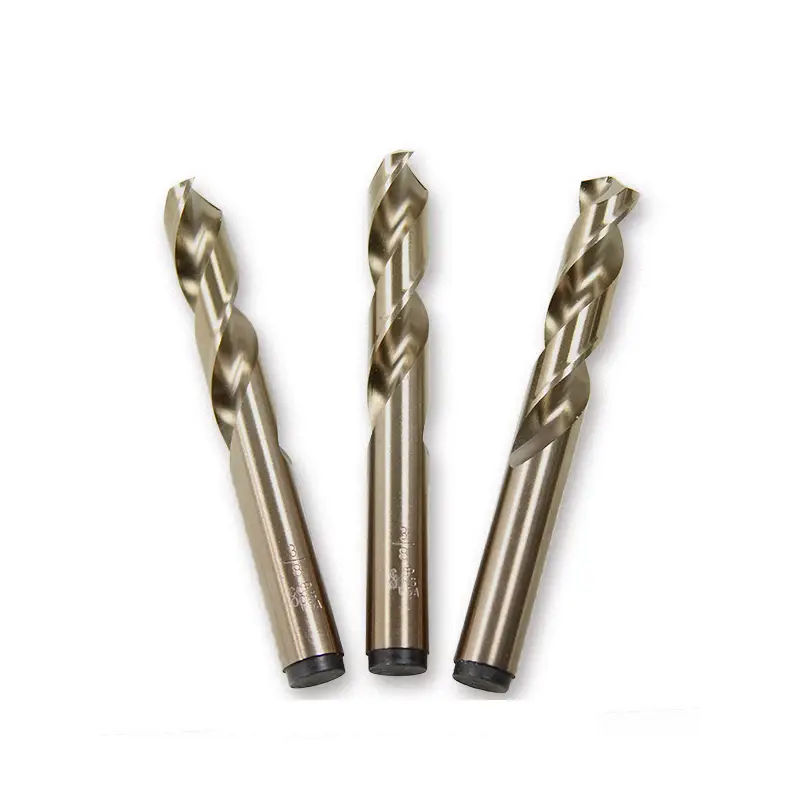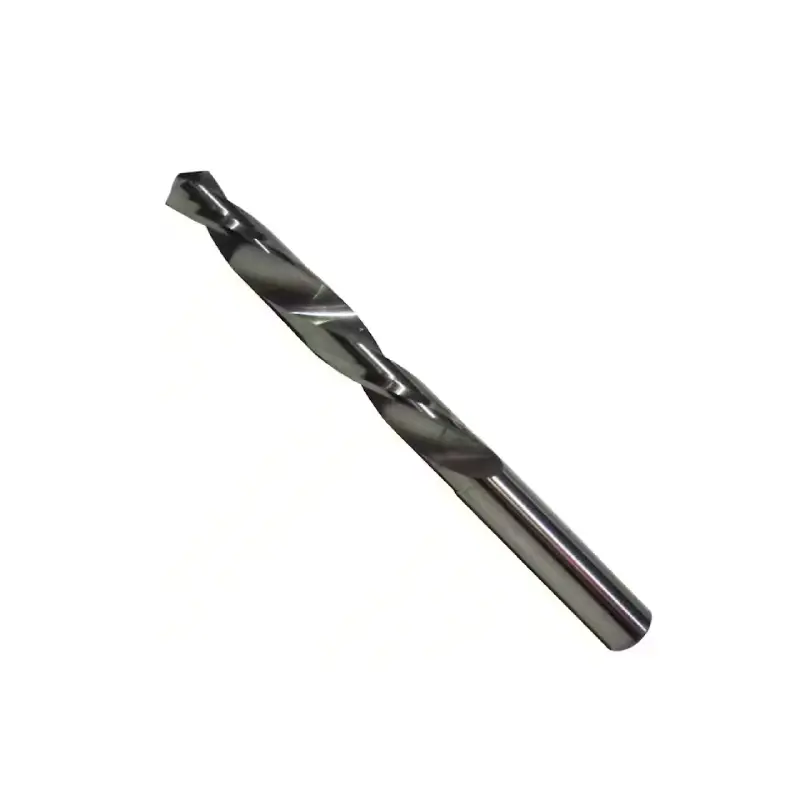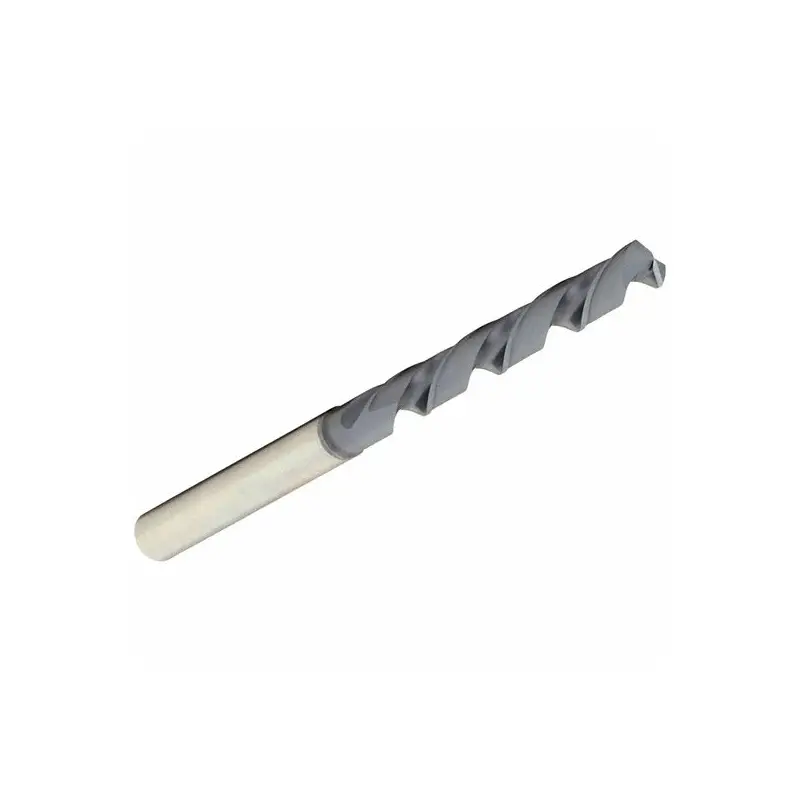Drill Bit Diameter Chart
A drill bit diameter chart is a reference tool that provides the corresponding diameters for different drill bit sizing systems. These charts are essential for machinists, engineers, and DIY enthusiasts to quickly identify the correct drill bit size needed for a specific hole dimension. Typically, these charts cross-reference fractional inches, decimal inches, millimeters, and often wire gauge or number sizes, allowing for easy conversion between different measurement systems. This prevents errors and ensures the drilled hole meets the required specifications, especially when working with materials that demand precise hole sizes for tapping, reaming, or fitting fasteners.
Sinodrills - Your Trusted Drill Bit Diameter Chart Manufacturer from China
Here is the drill bit diameter chart you provided, ordered numerically by the “#” drill bit number size:
| Drill Size | Diameter (in) | Diameter (mm) |
| #107 | 0.0019 | 0.0483 |
| #106 | 0.0023 | 0.0584 |
| #105 | 0.0027 | 0.0686 |
| #104 | 0.0031 | 0.0787 |
| #103 | 0.0035 | 0.0889 |
| #102 | 0.0039 | 0.0991 |
| #101 | 0.0043 | 0.1092 |
| #100 | 0.0047 | 0.1194 |
| #99 | 0.0051 | 0.1295 |
| #98 | 0.0055 | 0.1397 |
| #97 | 0.0059 | 0.1499 |
| #96 | 0.0063 | 0.1600 |
| #95 | 0.0067 | 0.1702 |
| #94 | 0.0071 | 0.1803 |
| #93 | 0.0075 | 0.1905 |
| #92 | 0.0079 | 0.2007 |
| #91 | 0.0083 | 0.2108 |
| #90 | 0.0087 | 0.2210 |
| #89 | 0.0091 | 0.2311 |
| #88 | 0.0095 | 0.2413 |
| #87 | 0.0100 | 0.2540 |
| #86 | 0.0105 | 0.2667 |
| #85 | 0.0110 | 0.2794 |
| #84 | 0.0115 | 0.2921 |
| #83 | 0.0120 | 0.3048 |
| #82 | 0.0125 | 0.3175 |
| #81 | 0.0130 | 0.3302 |
| #80 | 0.0135 | 0.3429 |
| #79 | 0.0145 | 0.3680 |
| #78 | 0.0160 | 0.4064 |
| #77 | 0.0180 | 0.4572 |
| #76 | 0.0200 | 0.5080 |
| #75 | 0.0210 | 0.5334 |
| #74 | 0.0225 | 0.5715 |
| #73 | 0.0240 | 0.6096 |
| #72 | 0.0250 | 0.6350 |
| #71 | 0.0260 | 0.6604 |
| #70 | 0.0280 | 0.7112 |
| #69 | 0.0292 | 0.7417 |
| #68 | 0.0310 | 0.7874 |
| #67 | 0.0320 | 0.8128 |
| #66 | 0.0330 | 0.8382 |
| #65 | 0.0350 | 0.8890 |
| #64 | 0.0360 | 0.9144 |
| #63 | 0.0370 | 0.9398 |
| #62 | 0.0380 | 0.9652 |
| #61 | 0.0390 | 0.9906 |
| #60 | 0.0400 | 1.0160 |
| #59 | 0.0410 | 1.0414 |
| #58 | 0.0420 | 1.0668 |
| #57 | 0.0430 | 1.0922 |
| #56 | 0.0465 | 1.1811 |
| #55 | 0.0520 | 1.3208 |
| #54 | 0.0550 | 1.3970 |
| #53 | 0.0595 | 1.5113 |
| #52 | 0.0635 | 1.6129 |
| #51 | 0.0670 | 1.7018 |
| #50 | 0.0700 | 1.7780 |
| #49 | 0.0730 | 1.8542 |
| #48 | 0.0760 | 1.9304 |
| #47 | 0.0785 | 1.9939 |
| #46 | 0.0810 | 2.0574 |
| #45 | 0.0820 | 2.0828 |
| #44 | 0.0860 | 2.1844 |
| #43 | 0.0890 | 2.2606 |
| #42 | 0.0935 | 2.3749 |
| #41 | 0.0960 | 2.4384 |
| #40 | 0.0980 | 2.4892 |
| #39 | 0.0995 | 2.5273 |
| #38 | 0.1015 | 2.5781 |
| #37 | 0.1040 | 2.6416 |
| #36 | 0.1065 | 2.7051 |
| #35 | 0.1100 | 2.7940 |
| #34 | 0.1110 | 2.8194 |
| #33 | 0.1130 | 2.8702 |
| #32 | 0.1160 | 2.9464 |
| #31 | 0.1200 | 3.0480 |
| #30 | 0.1285 | 3.2639 |
| #29 | 0.1360 | 3.4544 |
| #28 | 0.1405 | 3.5687 |
| #27 | 0.1440 | 3.6576 |
| #26 | 0.1470 | 3.7338 |
| #25 | 0.1495 | 3.7973 |
| #24 | 0.1520 | 3.8608 |
| #23 | 0.1540 | 3.9116 |
| #22 | 0.1570 | 3.9878 |
| #21 | 0.1590 | 4.0386 |
| #20 | 0.1610 | 4.0894 |
| #19 | 0.1660 | 4.2164 |
| #18 | 0.1695 | 4.3053 |
| #17 | 0.1730 | 4.3942 |
| #16 | 0.1770 | 4.4958 |
| #15 | 0.1800 | 4.5720 |
| #14 | 0.1820 | 4.6228 |
| #13 | 0.1850 | 4.6990 |
| #12 | 0.1890 | 4.8006 |
| #11 | 0.1910 | 4.8514 |
| #10 | 0.1935 | 4.9149 |
| #9 | 0.1960 | 4.9784 |
| #8 | 0.1990 | 5.0546 |
| #7 | 0.2010 | 5.1054 |
| #6 | 0.2040 | 5.1816 |
| #5 | 0.2055 | 5.2197 |
| #4 | 0.2090 | 5.3086 |
| #3 | 0.2130 | 5.4102 |
| #2 | 0.2210 | 5.6134 |
| #1 | 0.2280 | 5.7912 |
| #0 | 0.2340 | 5.9436 |
Various Drill Bit Diameter Chart

#10 screw diameter drill bit
Sinodrills offers a variety of drill bits suitable for pilot holes for #10 screws. The ideal drill bit diameter depends on the material you’re working with (hardwood, softwood, metal, etc.). For general applications in wood, a 9/64″ (approximately 3.57 mm) drill bit is often recommended. We provide high-quality bits in various materials and sizes to ensure precise pilot holes for secure screw fastening. Explore our selection for your specific needs.

#17 drill bit diameter
Sinodrills offers #17 drill bits with a diameter of 0.1730 inches (4.3942 mm). These bits are commonly used for creating pilot holes for specific screw sizes and tapping operations. Our high-quality #17 drill bits are manufactured to precise standards, ensuring accurate hole dimensions for secure and reliable fastening. Explore our range of drill bits to find the perfect match for your project requirements.

#21 drill bit diameter
Sinodrills offers high-precision #21 drill bits, essential for creating pilot holes for specific screw sizes and tapping operations. According to standard charts, a #21 drill bit has a diameter of 0.1590 inches (4.0386 mm). We provide these bits in durable materials like high-speed steel, ensuring accuracy and longevity for your drilling tasks. Choose Sinodrills for reliable and precisely sized drill bits for your projects.
what is drill bit diameter?
A drill bit diameter refers to the measurement across the cutting end of the drill bit, which determines the size of the hole it will create. Drill bits come in a wide range of diameters to suit various applications and fastener sizes.
These drill bit diameters are often expressed in different units and sizing systems, including fractional inches, decimal inches, millimeters, and number or letter gauge sizes. Understanding the drill bit diameter is crucial for selecting the correct tool for a specific task, ensuring accurate hole dimensions for proper fit and functionality.
how to measure drill bit diameter?
Accurately determining the diameter of a drill bit is essential for selecting the correct size for your drilling tasks, ensuring precision and preventing damage to your workpiece or fasteners. Whether you’ve lost the original packaging or the markings have worn off, there are a few straightforward methods you can employ to measure the diameter accurately.
These methods primarily involve using measuring tools to find the distance across the widest cutting part of the drill bit.
Step 1: Visual Inspection and Comparison (Initial Estimation)
Begin by visually inspecting the drill bit. Often, especially on larger bits, the size is etched or stamped onto the shank (the non-cutting end that fits into the drill chuck). Look for markings that might indicate the diameter in inches (fractional or decimal) or millimeters.
If there are no visible markings or they are illegible, you can try comparing the bit to a drill bit index or gauge. These tools have a series of precisely sized holes; by inserting the drill bit into different holes, you can find the one that fits snugly without any play, giving you an approximate diameter.
Step 2: Using a Caliper (Precise Measurement)
For a more accurate measurement, the best tool to use is a caliper, either a Vernier caliper or a digital caliper. To measure the drill bit diameter with a caliper, first, ensure the caliper is zeroed. Then, carefully open the external jaws of the caliper and place them across the cutting flutes of the drill bit at its widest point. Gently close the jaws until they make contact with the outer edges of the flutes without applying excessive pressure.
The measurement displayed on the caliper’s scale (for a Vernier caliper) or digital screen (for a digital caliper) will be the diameter of the drill bit. It’s advisable to take a couple of measurements by rotating the drill bit slightly to ensure you’ve captured the true diameter, as slight variations can occur.
Step 3: Using a Ruler or Measuring Tape (Less Precise)
If a caliper or drill bit gauge is not available, you can use a ruler or measuring tape, although the accuracy will be less precise. Place the drill bit on a flat surface next to the ruler or measuring tape. Align the zero mark with one of the cutting edges at the widest point of the drill bit.
Carefully observe the point on the ruler that aligns with the opposite cutting edge. Due to the curvature of the drill bit and the typically small diameters involved, this method can be challenging to get a highly accurate reading. It’s best used as a rough estimate when more precise tools are not accessible.
Step 4: Utilizing a Drill Bit Diameter Chart (Reference)
Once you have a measurement (preferably from a caliper), you can refer to a drill bit diameter chart to identify the corresponding drill bit size in different sizing systems (fractional, metric, number, letter).
These drill bit diameter charts are readily available online or in machinery handbooks. By matching your measured diameter to the chart, you can determine the standard drill bit size. This is particularly useful if your caliper provides a decimal measurement, and you need to know the fractional or number size equivalent.
how to choose suitable drill bit diameter?
Choosing the correct drill bit diameter is a critical step in any drilling project, directly impacting the quality of the hole, the integrity of the workpiece, and the secure fastening of screws or other hardware.
Selecting a bit that is too small can result in pilot holes that are too tight, potentially causing screws to break or wood to split. Conversely, a bit that is too large can lead to loose fasteners and weakened joints. Therefore, understanding the factors that influence the ideal drill bit diameter is essential for successful outcomes.
Step 1: Determine the Purpose of the Hole
The primary factor in choosing a drill bit diameter is the intended purpose of the hole. Are you drilling a pilot hole for a screw, a clearance hole for a bolt, or a hole for a dowel or other type of fitting? The size requirements will vary significantly based on the application.
For pilot holes, the diameter should be slightly smaller than the screw’s core diameter (the solid part of the screw without the threads) to allow the threads to grip the material. For clearance holes, the diameter should be slightly larger than the bolt’s diameter to allow it to pass through freely. For dowels and fittings, the hole diameter should match the diameter of the item being inserted for a snug fit.
Step 2: Consider the Material Being Drilled
The type of material you are drilling into also plays a crucial role in determining the appropriate drill bit diameter, especially for pilot holes. Harder materials like hardwoods and metals generally require pilot holes that are closer in size to the screw’s core diameter to prevent excessive force and potential breakage.
Softer materials like softwoods require slightly smaller pilot holes to ensure the screw threads have enough material to grip effectively. For very brittle materials like ceramic or glass, specialized drill bits and careful consideration of the required hole size are necessary to avoid cracking or shattering the material.
Step 3: Refer to Fastener Size Charts and Guidelines
For drilling pilot holes for screws, it is highly recommended to consult screw size charts or manufacturer guidelines. These resources typically provide recommended pilot hole diameters for different screw sizes and material types.
These drill bit charts often list the screw gauge number or diameter and suggest a corresponding drill bit size in fractional inches or millimeters. Using these charts takes the guesswork out of the selection process and helps ensure a proper fit and secure fastening. Many woodworking and hardware suppliers provide these charts as a valuable resource for their customers.
Step 4: Test Drilling (When in Doubt)
When you are unsure about the ideal drill bit diameter, especially when working with unfamiliar materials or critical applications, it is always a good practice to perform a test drill on a scrap piece of the same material. Start with a drill bit size that you estimate to be appropriate based on the fastener size and material. Then, try inserting the screw or bolt.
If it’s too tight, try a slightly larger drill bit. If it’s too loose, try a slightly smaller one. This iterative approach allows you to fine-tune your selection and ensure the perfect hole size for your specific needs before drilling into your final workpiece.
Send Your Inquiry Now
Get Drill Bit Diameter Chart Now
Looking for a reliable drill bit diameter chart? Sinodrills offers a comprehensive and easy-to-use chart covering fractional, metric, and wire gauge sizes. Ensure accurate hole drilling for all your projects. Download our free drill bit diameter chart now for quick and precise drill bit selection!


